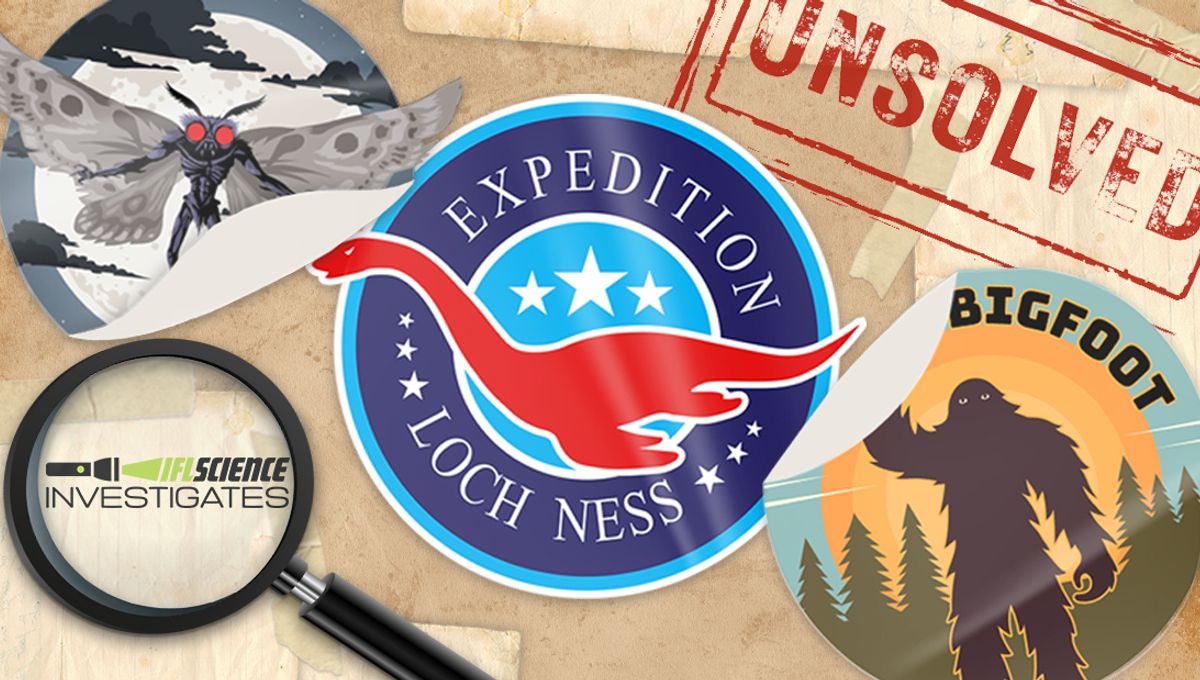
Bigfoot, Yeti, the Loch Ness Monster, Mothman, the list of cryptids goes on. But what exactly is cryptozoology, and how is it related to the “monsters” that we can’t explain?
What is cryptozoology?
Cryptozoology is the study of hidden or unknown animals, often referred to as cryptids. The field takes into account evidence from witnesses and the surrounding folklore and culture.
Unlike in traditional zoology, the animals are not scientifically recognized as their own species; instead, they exist only in the reports of those who claim to have had experiences with them.
“If you think about anything that we call a cryptid, which is basically a creature that’s been reported from anecdotal evidence, you know, people say they’ve seen it, or they say they photographed it, or there are stories about it, but it’s not recognized as a scientifically valid species,” explained Dr Darren Naish, palaeontologist, author, and cryptozoology expert, to IFLScience.
“Bigfoot is an example. Yeti is an example. The Loch Ness Monster is an example. Crypto is supposed to be the academic study of that entire field.”
There are significant misunderstandings related to the field, but is there something of value to be found in looking at the data and science behind these supposed eye-witness accounts?
How did it start?
Bernard Heuvelmans is largely credited as being the “Father of Cryptozoology”, having published two books in 1955 and 1965 on the topic. He was also the founding member and later became President of the now-defunct International Society of Cryptozoology.
Alongside him sits Ivan T. Sanderson; these two figures proposed that cryptozoology should be undertaken with science in mind, but taking into account the local folklore of a region and witness reports.
Even Conrad Gessner, who is said to have inspired a lot of modern zoology with his five-volume book Historiae Animalium, described unicorns, sea monsters, dragons, and mermaids alongside more traditional known animals.
The concept of cryptid is always there. It’s an unshakable part of human cultures.
Dr Darren Naish
Other notable figures include Charles Fort, who wrote The Book of the Damned, which contained reports on things that had “fallen out of the sky” as well as evolution, geology, and geometry. The title is said to refer to the “damned data” that Fort gathered for the book, data that science could not explain.
His fascination with anomalous phenomena informed many of his writings, though he also explored the idea of aliens. Many of his book proposals were rejected by publishers because of his tone and mocking style of writing.
What about creatures that have been proven to exist?
In the 15th century BCE, Queen Hatshepsut of Egypt received many ships that had sailed across the Red Sea, bringing unique animals to her shores. These animals were given names such as the “long-necked dragon”, which is now known as the giraffe, and “African unicorn”, which was discovered in the 20th century and is the modern-day okapi.
Some creatures have been speculated about and later found to be real animals, such as the giant squid. Meanwhile, lots of large mammals were formally scientifically discovered at the start of the 20th century, largely by white European male explorers who were visiting areas for the first time. This differs from looking for a cryptid like Bigfoot in a large area like the Pacific Northwest, which has been extensively explored by humans.
The International Cryptozoology Museum in Portland, Maine, is the world’s only cryptozoology museum and features a coelacanth as its logo. This is often touted as an example of a “successful” cryptozoology story where an animal that was believed to be extinct for 70 million years was rediscovered in 1938. In news coverage at the time, it was claimed that the Loch Ness Monster had been “outdone”.
“The existence of those kinds of creatures does not lend support to the notion of things like the Loch Ness Monster being real. And you could say the same for a lot of the other famous crypto animals at this point. The claim that, for example, people haven’t looked for Bigfoot, it’s just, it’s just not true. People have. People have looked for Bigfoot a lot, and sadly, they haven’t yet found any evidence that really stands up,” Naish told IFLScience.
Cryptozoology in the modern world
With the rise of the internet, social media, and modern technology, you might think that the most avid monster hunters would be on the back foot against such tech that can locate body heat or help you see in the dark.
“The world is not fully explored. You have this false notion that because of satellite photography the world is explored and mapped, which it isn’t because you can’t see through a forest canopy. There are large swaths of central Africa, Asia, Australia, South America that are uncharted,” Richard Freeman, zoological director of the Centre for Fortean Zoology, told Atlas Obscura.
Technology may even be feeding into the fire, helping people connect and share their own experiences with a wider audience. However, this is a double-edged sword, helping researchers have easy access to accounts, but perhaps attributing a monetary advantage for accounts that perpetuate false claims.
Regardless, what’s certain is that the ideas and mysteries surrounding these cryptids aren’t going anywhere.
“The concept of cryptid is always, is always there. It’s an unshakable part of human cultures,” added Naish. “And you could say that for cryptids, or worldwide, wherever people go, they have ideas about creatures in the landscape, whether they’re real or not, they’re part of the cultural understanding of what the landscape is like.”
Source Link: What Is Cryptozoology? We Explore The History And Mystery Of This Controversial Field